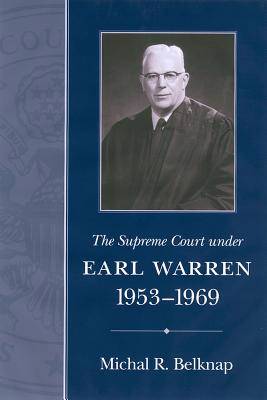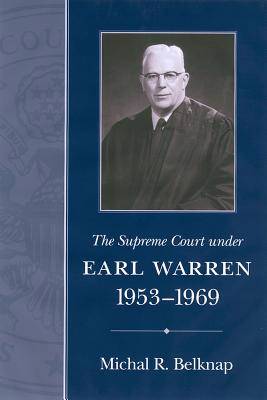
- Retrait gratuit dans votre magasin Club
- 7.000.000 titres dans notre catalogue
- Payer en toute sécurité
- Toujours un magasin près de chez vous
- Retrait gratuit dans votre magasin Club
- 7.000.0000 titres dans notre catalogue
- Payer en toute sécurité
- Toujours un magasin près de chez vous
Description
A thorough study of the many Warren Court issues and decisions--school desegregation, separation of church and state, freedom of expression--that remain controversial to this day
In The Supreme Court under Earl Warren, 1953-1969, Michal Belknap recounts the eventful history of the Warren Court. Chief Justice Earl Warren's sixteen years on the bench were among the most dramatic, productive, and controversial in the history of the Supreme Court. Warren's tenure saw the Court render decisions that are still hotly debated today. Its rulings addressed such issues as school desegregation, separation of church and state, and freedom of expression.
In 1954 Warren and his colleagues struck down school segregation as unconstitutional. They then participated in a broad campaign to win equal rights for African Americans. While it cautiously dismantled McCarthy-era infringements on civil liberties, the Warren Court boldly expanded freedom of expression in other areas. Frankly using constitutional law as a tool to promote political and social reform, the Warren Court revolutionized criminal procedure and mandated an end to the malapportionment of state legislatures and other representative institutions. It both invented and constitutionally guaranteed individuals' rights to privacy with respect to sexual matters. Its rulings did much to advance the agenda of the liberal reformers who dominated American politics during the 1960s. But these rulings also angered many Americans, who accused the Warren Court of running God out of the public schools, handcuffing the police, and flooding the country with smut.
Although it staggered to an end in 1969 amid controversy and scandal, the Warren Court revolutionized constitutional law. In the entire history of the Supreme Court, only John Marshall's tenure can compare with Warren's in respect to the significance of its decisions and its impact on the development of American constitutional law. No other Court has had greater impact on American culture and mores than that of Earl Warren.
Drawing on internal memoranda as well as published opinions of the justices, Belknap reveals the philosophical debates and personality conflicts behind the Court's decisions. He also assesses the overall accomplishments and failures of the Warren Court and places them in both their political and social contexts.
Spécifications
Parties prenantes
- Auteur(s) :
- Editeur:
Contenu
- Nombre de pages :
- 432
- Langue:
- Anglais
- Collection :
Caractéristiques
- EAN:
- 9781570035630
- Date de parution :
- 01-05-05
- Format:
- Livre relié
- Format numérique:
- Genaaid
- Dimensions :
- 164 mm x 233 mm
- Poids :
- 689 g

Les avis
Nous publions uniquement les avis qui respectent les conditions requises. Consultez nos conditions pour les avis.






